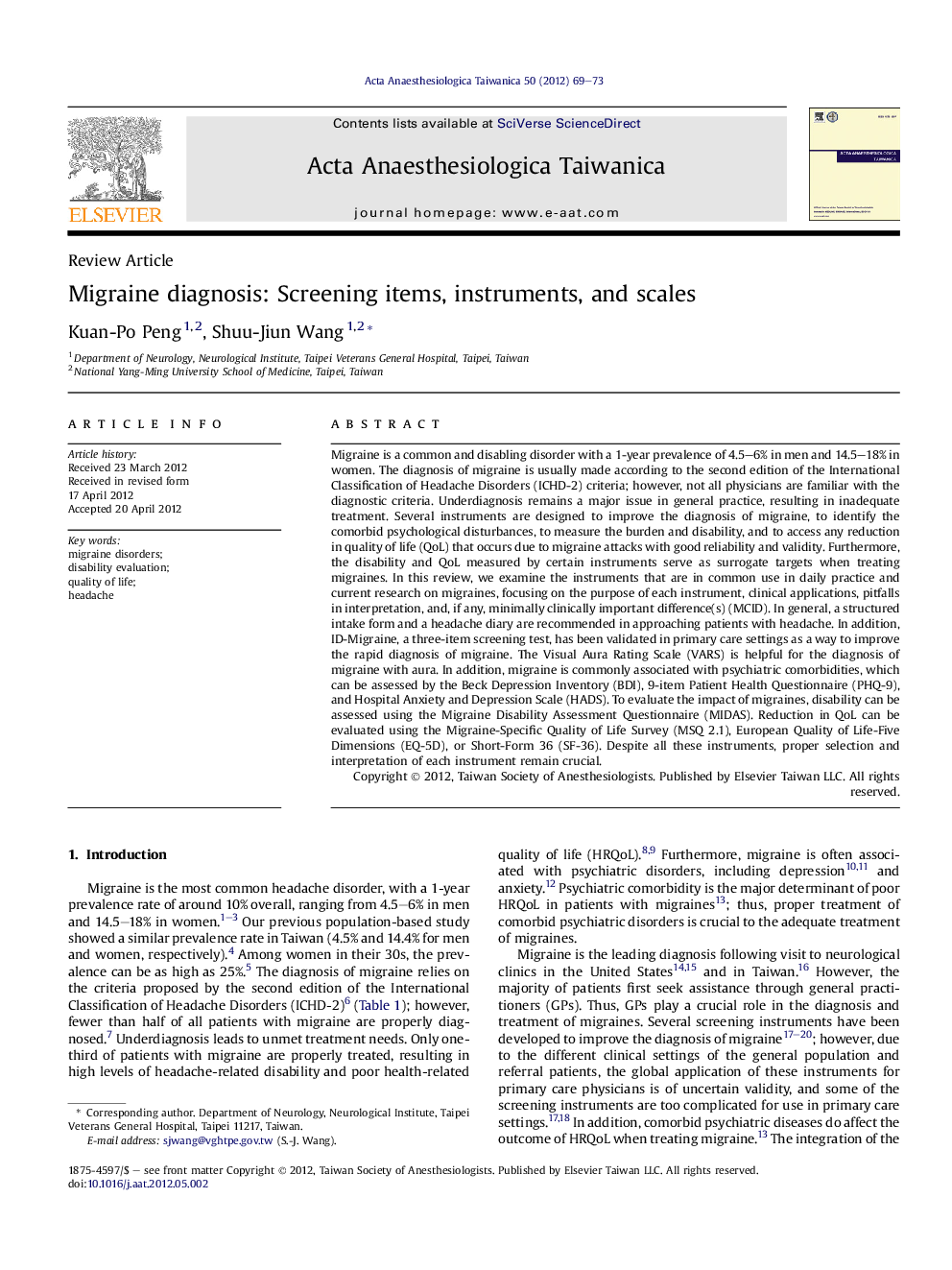| کد مقاله | کد نشریه | سال انتشار | مقاله انگلیسی | نسخه تمام متن |
|---|---|---|---|---|
| 2741513 | 1148536 | 2012 | 5 صفحه PDF | دانلود رایگان |

Migraine is a common and disabling disorder with a 1-year prevalence of 4.5–6% in men and 14.5–18% in women. The diagnosis of migraine is usually made according to the second edition of the International Classification of Headache Disorders (ICHD-2) criteria; however, not all physicians are familiar with the diagnostic criteria. Underdiagnosis remains a major issue in general practice, resulting in inadequate treatment. Several instruments are designed to improve the diagnosis of migraine, to identify the comorbid psychological disturbances, to measure the burden and disability, and to access any reduction in quality of life (QoL) that occurs due to migraine attacks with good reliability and validity. Furthermore, the disability and QoL measured by certain instruments serve as surrogate targets when treating migraines. In this review, we examine the instruments that are in common use in daily practice and current research on migraines, focusing on the purpose of each instrument, clinical applications, pitfalls in interpretation, and, if any, minimally clinically important difference(s) (MCID). In general, a structured intake form and a headache diary are recommended in approaching patients with headache. In addition, ID-Migraine, a three-item screening test, has been validated in primary care settings as a way to improve the rapid diagnosis of migraine. The Visual Aura Rating Scale (VARS) is helpful for the diagnosis of migraine with aura. In addition, migraine is commonly associated with psychiatric comorbidities, which can be assessed by the Beck Depression Inventory (BDI), 9-item Patient Health Questionnaire (PHQ-9), and Hospital Anxiety and Depression Scale (HADS). To evaluate the impact of migraines, disability can be assessed using the Migraine Disability Assessment Questionnaire (MIDAS). Reduction in QoL can be evaluated using the Migraine-Specific Quality of Life Survey (MSQ 2.1), European Quality of Life-Five Dimensions (EQ-5D), or Short-Form 36 (SF-36). Despite all these instruments, proper selection and interpretation of each instrument remain crucial.
Journal: Acta Anaesthesiologica Taiwanica - Volume 50, Issue 2, June 2012, Pages 69–73